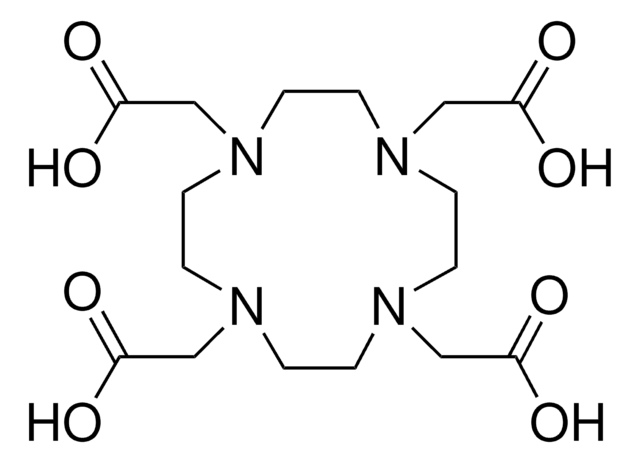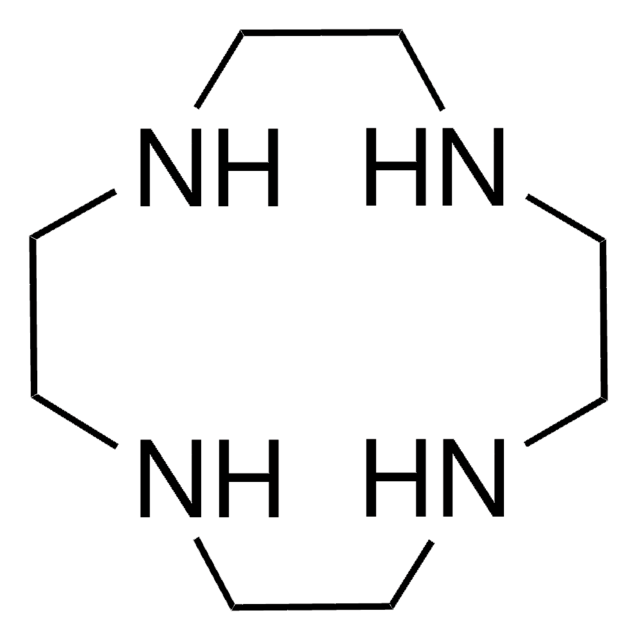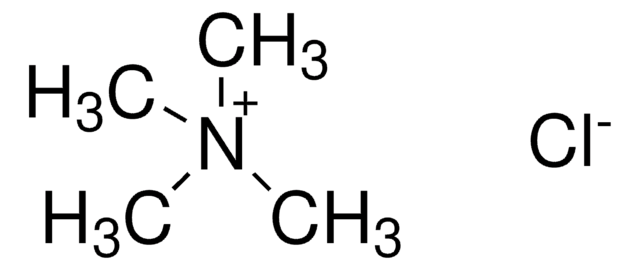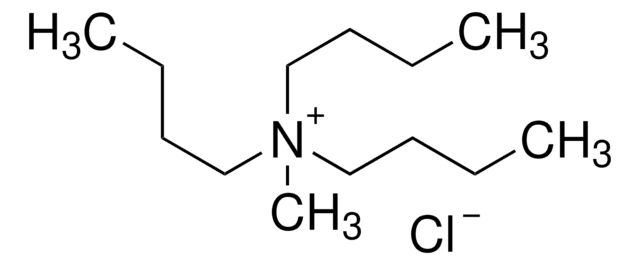86870
Tetrabutylammonium chloride
≥97.0% (NT)
Sinonimo/i:
N,N,N-tributyl-butanaminium chloride
About This Item
Prodotti consigliati
Livello qualitativo
Saggio
≥97.0% (NT)
Forma fisica
crystals
Caratteristiche più verdi
Catalysis
Learn more about the Principles of Green Chemistry.
sustainability
Greener Alternative Product
Impurezze
≤1% water
Solubilità
H2O: 20 mg/mL, clear, colorless
Categoria alternativa più verde
, Aligned
Stringa SMILE
[Cl-].CCCC[N+](CCCC)(CCCC)CCCC
InChI
1S/C16H36N.ClH/c1-5-9-13-17(14-10-6-2,15-11-7-3)16-12-8-4;/h5-16H2,1-4H3;1H/q+1;/p-1
NHGXDBSUJJNIRV-UHFFFAOYSA-M
Cerchi prodotti simili? Visita Guida al confronto tra prodotti
Descrizione generale
We are committed to bringing you Greener Alternative Products, which adhere to one or more of The 12 Principles of Greener Chemistry. This product has been enhanced for catalytic efficiency. Find details here.
Applicazioni
- 2-Amino-4H-chromene derivatives by the condensation reaction of aldehydes, malononitrile, and α, or β-naphthol.
- Methyl esters by esterification reaction of carboxylic acids with dimethyl carbonate in the presence of K2CO3.
TBACl can also be used with phosphorus pentoxide for greener deoxychlorination.
Process for Producing Halogenated Heteroaryl Compounds
Avvertenze
Warning
Indicazioni di pericolo
Consigli di prudenza
Classi di pericolo
Eye Irrit. 2 - Skin Irrit. 2
Codice della classe di stoccaggio
11 - Combustible Solids
Classe di pericolosità dell'acqua (WGK)
WGK 3
Punto d’infiammabilità (°F)
235.4 °F - closed cup
Punto d’infiammabilità (°C)
113 °C - closed cup
Dispositivi di protezione individuale
dust mask type N95 (US), Eyeshields, Gloves
Scegli una delle versioni più recenti:
Possiedi già questo prodotto?
I documenti relativi ai prodotti acquistati recentemente sono disponibili nell’Archivio dei documenti.
I clienti hanno visto anche
Il team dei nostri ricercatori vanta grande esperienza in tutte le aree della ricerca quali Life Science, scienza dei materiali, sintesi chimica, cromatografia, discipline analitiche, ecc..
Contatta l'Assistenza Tecnica.












